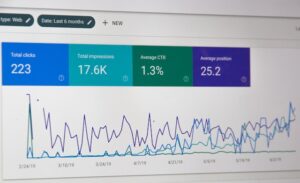Are you struggling to manage your time effectively while working remotely? Don't worry, we've got you covered.
In this article, we'll explore some practical strategies that can help you stay organized and productive. From prioritizing tasks and setting goals to establishing a structured daily routine, we'll provide you with the tools and tips you need to make the most of your time.
Say goodbye to distractions and hello to efficient remote time management. Let's dive in!
Prioritizing Tasks and Setting Goals
How can you effectively prioritize tasks and set goals while working remotely?
One effective strategy is to use time blocking, where you allocate specific time slots for different tasks or activities. By dividing your day into dedicated blocks, you can ensure that important tasks are given the necessary attention and aren't overlooked. It also helps in avoiding multitasking and maintaining focus on one task at a time.
Another strategy is task delegation. As a remote worker, you may have the flexibility to delegate certain tasks to colleagues or freelancers, allowing you to focus on high-priority tasks that require your expertise. Delegating tasks not only helps in better time management but also promotes collaboration and ensures that work is distributed evenly among team members.
Establishing a Structured Daily Routine
To establish a structured daily routine while working remotely, start by setting clear and specific time slots for different tasks and activities. This will help you create boundaries between work and personal life, ensuring that you maintain discipline and avoid burnout.
Here are three effective strategies to help you establish a structured daily routine:
- Prioritize your most important tasks: Start your day by identifying the most important tasks that need to be completed. Allocate specific time slots for these tasks to ensure they receive your full attention and focus.
- Take regular breaks: Break your workday into smaller chunks and schedule short breaks in between. This will help you maintain productivity and prevent mental fatigue.
- Set a consistent start and end time: Establish a routine by consistently starting and ending your workday at the same time. This will create a sense of structure and make it easier to separate work and personal time.
Utilizing Time Tracking and Scheduling Tools
Utilize time tracking and scheduling tools to effectively manage your remote work schedule. These tools can help you stay organized and make the most of your time.
By tracking and logging your activities, you can gain insights into where your time is being spent and identify areas for improvement.
Additionally, scheduling tools allow you to plan your day in advance, ensuring that you allocate enough time for each task and prioritize your work accordingly.
Time management techniques such as the Pomodoro technique, where you work for a set period and then take short breaks, can be easily implemented with the help of these tools.
Don't forget to explore productivity hacks like setting reminders and notifications to keep you on track and focused.
With the right time tracking and scheduling tools, you can optimize your remote work schedule and boost your productivity.
Minimizing Distractions and Creating a Dedicated Workspace
To maintain focus and increase productivity while working remotely, it's important to minimize distractions and create a dedicated workspace. Here are three strategies to help you eliminate interruptions and maintain focus:
- Designate a specific area in your home as your workspace. This will create a clear boundary between work and personal life, allowing you to mentally switch gears when you enter or leave that space.
- Minimize external distractions by turning off notifications on your phone and computer. Put your phone on silent or in another room to avoid the temptation of checking it constantly.
- Establish a routine and stick to it. Set specific work hours and create a schedule that suits your most productive times. This will help you stay focused and avoid getting sidetracked by non-work-related tasks.
Practicing Effective Communication and Collaboration
For effective communication and collaboration while working remotely, rely on tools like video conferencing and instant messaging. These tools can greatly improve virtual meetings by allowing face-to-face interactions and real-time conversations. Video conferencing enables you to see and hear your colleagues, making discussions more engaging and productive.
Instant messaging, on the other hand, provides a quick and efficient way to ask questions, share updates, and coordinate tasks with your team members. By utilizing these communication tools, you can foster team engagement and ensure everyone is on the same page.
It's important to encourage active participation and create a supportive environment where everyone feels comfortable expressing their ideas and opinions. Regular check-ins and team meetings also help maintain open lines of communication and strengthen collaboration while working remotely.
Frequently Asked Questions
How Can I Effectively Manage My Time While Working Remotely?
To effectively manage your time while working remotely, start by implementing time blocking and productivity techniques. These strategies can help you stay organized, prioritize tasks, and make the most of your workday.
What Are Some Tips for Setting Goals and Prioritizing Tasks When Working From Home?
To set goals and prioritize tasks while working from home, start by identifying what needs to be accomplished. Break them down into smaller steps and create a schedule to stay organized and focused.
How Can I Establish a Daily Routine That Helps Me Stay Productive While Working Remotely?
To establish a daily routine that keeps you productive while working remotely, start by setting clear goals and prioritizing tasks. Create a schedule, eliminate distractions, and take regular breaks to maintain focus throughout the day.
Are There Any Time Tracking and Scheduling Tools That Can Help Me Manage My Remote Work Schedule More Efficiently?
Yes, there are time tracking apps available that can help you manage your remote work schedule more efficiently. By using these time management techniques, you can effectively track and schedule your tasks.
What Strategies Can I Use to Minimize Distractions and Create a Dedicated Workspace at Home for Better Remote Time Management?
To minimize distractions and create a dedicated workspace at home, start by decluttering your surroundings and setting boundaries with family members. Use noise-cancelling headphones and establish a routine to establish a focused environment for better remote time management.
Conclusion
In conclusion, by prioritizing tasks, setting goals, and establishing a structured routine, you can effectively manage your time while working remotely.
Additionally, utilizing time tracking tools, minimizing distractions, and practicing effective communication are crucial strategies for staying organized, focused, and productive in your remote work environment.
Remember to consistently evaluate and adjust your approach to ensure maximum efficiency and success.




